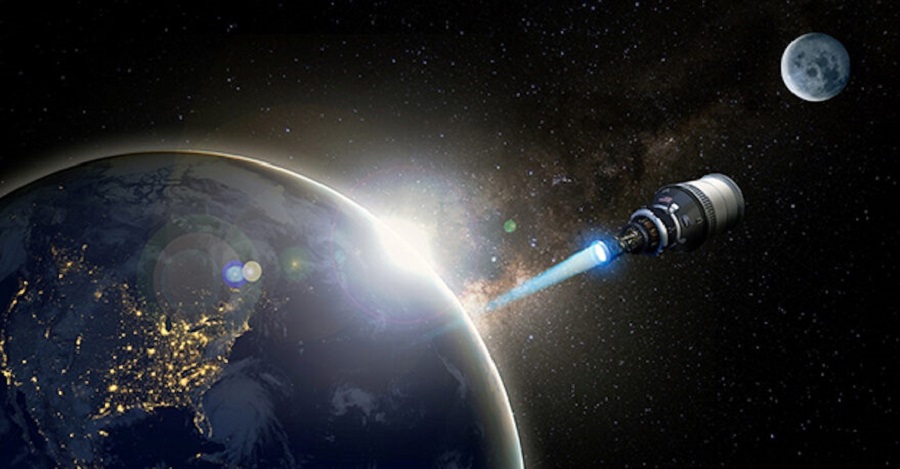DARPA has announced that the DRACO nuclear thermal propulsion spacecraft project is entering a new stage. In 2026, the spacecraft should make the first test flight in space.

Spaceship with nuclear reactor
DARPA was founded in 1958 as a response to the Soviet Union’s launch of the first artificial Earth satellite. The task at the agency is simple: to ensure the primacy of the United States in technology. And the agency is successfully fulfilling this task. This time it was interested in nuclear reactors.
The US Defense Advanced Research Projects Agency (DARPA) announced on May 4 that its project of a spacecraft with a nuclear rocket engine has entered a new stage of development. On it, General Atomics should develop and present a ready-made sample of the power plant of the device.
The Demonstration Rocket for Agile Cislunar Operations (DRACO) project started a year ago. DARPA has concluded an agreement with General Atomics that they will develop a nuclear reactor, and Blue Origin and Lockheed Martin will independently develop spacecraft designs for it.
But these developments will be presented only at the third phase of the project. Currently, General Atomics must consider not only the design of the reactor, but also the methods of its manufacture and assembly. The spacecraft is planned to be launched into space in 2026.
DARPA prepares to make a breakthrough in space
A jet engine that uses a nuclear reaction rather than a chemical reaction as a source of thrust has a great advantage over chemical ones. Gases escaping through its nozzle have many times higher velocity than kerosene-oxygen and other modern propellers. Due to this, a small amount of working fluid will be required to obtain high speed in space.
Previously, the United States has already tried to create a nuclear thermal rocket. But past attempts ended at the project stage. Now DARPA has got down to business seriously. The contract amount with General Atomics is USD 22 million, with Blue Origin and Lockheed Martin – about 2.5 million each. The future spacecraft is not required to deliver people or cargo anywhere.
Just to demonstrate that the nuclear reactor is working. But this test could begin a new era in space exploration. After all, it will mean the appearance of faster spacecraft. It is expected the nuclear reactor will be more efficient than ion and plasma ones, which are just beginning to be used now.
According to spacenews.com
Follow us on Twitter to get the most interesting space news in time
https://twitter.com/ust_magazine

